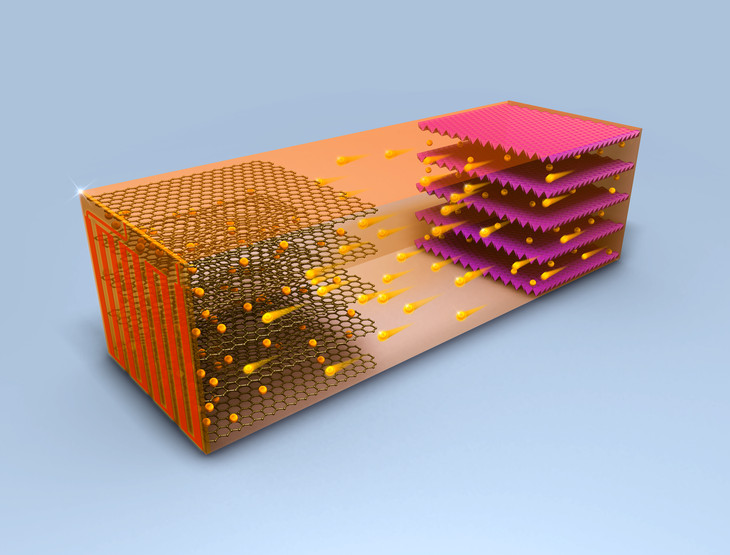From pv magazine global
Scientists in the U.S. claim to have developed a self-heating battery which can charge an electric vehicle (EV) in 10 minutes, enough to power a range of 200-300 miles.
The researchers, from Penn State University, said their battery can charge at 60 degrees Celsius and improves the performance of a previous device which could deliver similar range after a 15-minute charge at 10 degrees Celsius. “Charging at higher temperatures would be more efficient but long periods of high heat also degrade the batteries,” said the developers, who added the device can undergo 2,500 charge cycles – enough to power 500,000 miles of use.
The battery features a thin nickel foil attached to the negative terminal at one end and to the external side of the battery cell at the other. It was equipped with a temperature sensor attached to a switch, which is responsible for pushing electrons through the nickel foil to complete the circuit. The configuration is said to quickly raise the temperature of the nickel foil, through resistance heating, while warming the battery interior.
The researchers said there was no occurrence of lithium deposition in spikes on the anode surface, which reduces cell capacity and causes dangerous electrical spikes. The developers of the device claim raising the operating temperature further could be unsafe and would reduce the battery’s lifecycle.
The scientists said their battery could be cooled rapidly by a EV cooling system. “The 10-minute trend is for the future and is essential for adoption of electric vehicles because it solves the range anxiety problem,” said research author Chao-Yang Wang.
The research project was supported by the U.S. Department of Energy.
This content is protected by copyright and may not be reused. If you want to cooperate with us and would like to reuse some of our content, please contact: editors@pv-magazine.com.









By submitting this form you agree to pv magazine using your data for the purposes of publishing your comment.
Your personal data will only be disclosed or otherwise transmitted to third parties for the purposes of spam filtering or if this is necessary for technical maintenance of the website. Any other transfer to third parties will not take place unless this is justified on the basis of applicable data protection regulations or if pv magazine is legally obliged to do so.
You may revoke this consent at any time with effect for the future, in which case your personal data will be deleted immediately. Otherwise, your data will be deleted if pv magazine has processed your request or the purpose of data storage is fulfilled.
Further information on data privacy can be found in our Data Protection Policy.